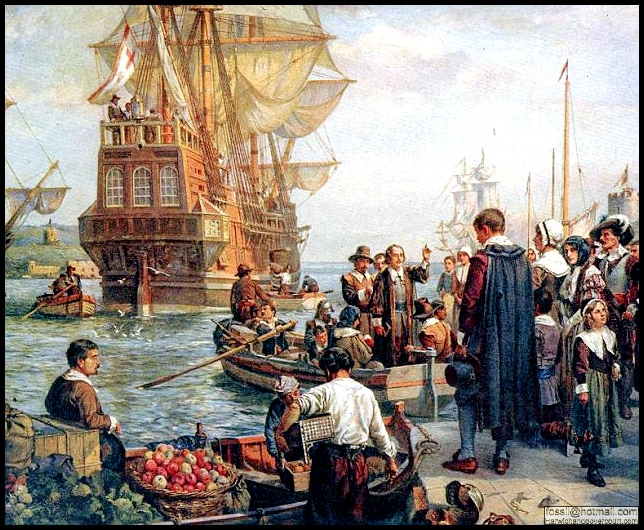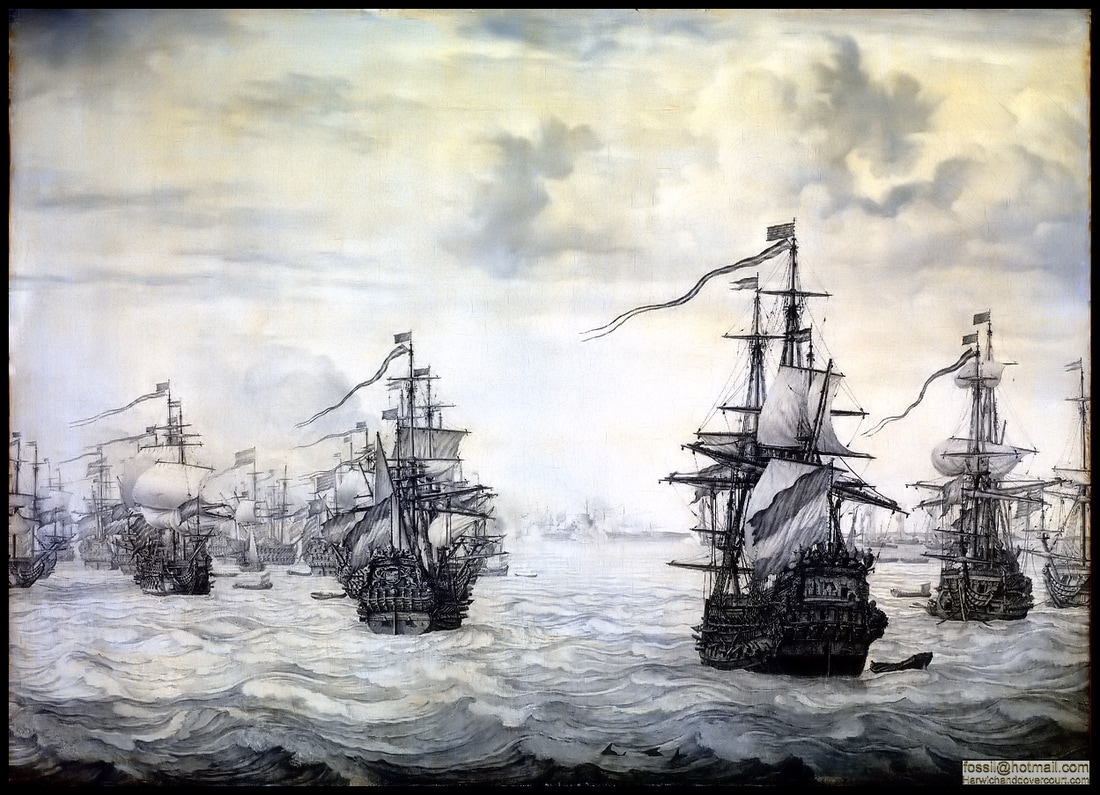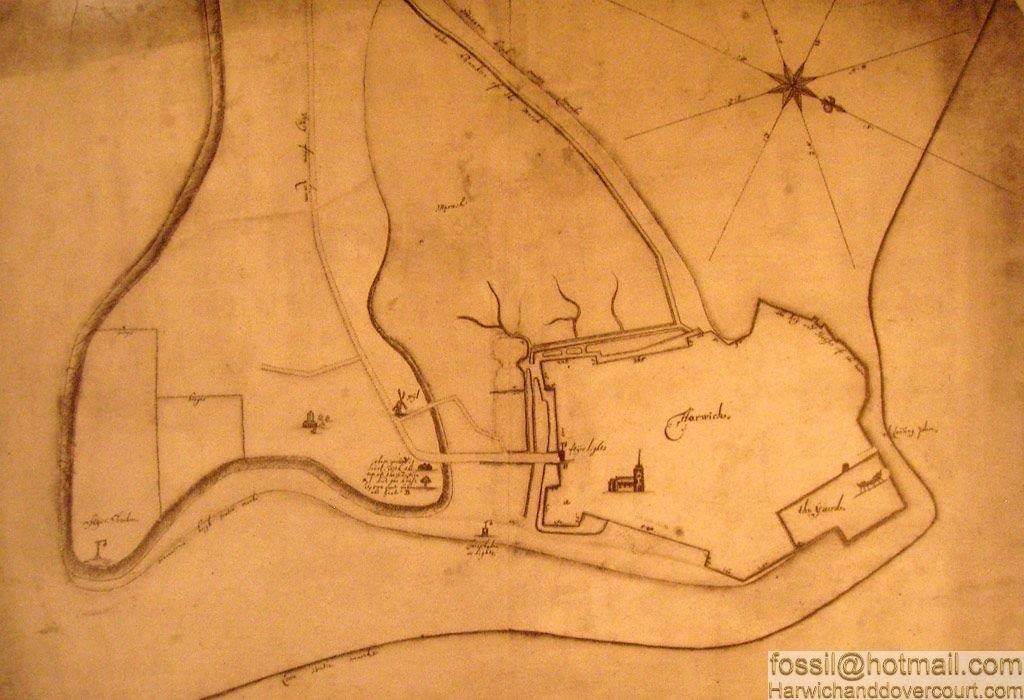The 17th Century
1620 ~ Launch of the "Mayflower" ~ Possibly built in Harwich ~
1669 ~ Dutch Attack on Harwich, July 1667 ~ Willem van de Velde
In June 1667 Lieutenant-Admiral Michiel de Ruyter led a daring Dutch amphibious attack on the Medway. His force burnt Sheerness, destroyed or captured a number of British ships off Chatham and blockaded the Thames for several weeks, before de Ruyter turned his attention on Harwich. The attempt was ultimately unsuccessful due to adverse weather conditions and the bombardment of Landguard Fort was ineffective. De Ruyter and Cornelis de Witt, representing the States-General, landed with their troops and followed them to the fort. However, it proved too strong to be captured and the Dutch troops were forced to re-embark. The artist has shown the Dutch fleet at anchor off Harwich with the nearer ships in Felixstowe roads and the more distant ones on the left in the Rolling Grounds, prior to the landing. A number of ships shown on the far left of the picture are thought to include the 'Gouden Leeuw', the 42-gun 'Zeven Provincien' and the 'Walcheren', 68 guns, as well as de Ruyter's flagship, the larger 'Zeven Provincien', 80 guns. This is identifiable by the coat of arms on her tafferel and by the flag and pendant at the main. In the foreground to the right of centre is the 'Wassenaar', in stern view and identifiable by the coat of arms on her tafferel. The inclusion of this ship is curious since she was not at the landing but further south, as part of Vice-Admiral Star's squadron. The Landguard Fort is visible in the distance beyond. The ship in the right foreground is the 'Huis te Oosterwijk' with a country house and lake or moat painted on her tafferel. She was an Amsterdam ship, also showing the arms of Amsterdam and lion supporters. On her starboard bow is another ship in bow view, moored with two anchors and belonging to the Zeeland squadron, since she has a Flushing jack and pendant. The ship astern flies a striped jack and belongs to a different squadron. Several galliots are shown on the right, with small boats close by preparing to land the troops. In the foreground the artist has included three porpoises, which were known to exist in great numbers off the coast of Harwich. Born in Leiden, van de Velde moved to Amsterdam with his two sons Adriaen and Willem, who were also painters. The former and younger painted landscapes but with Willem, the older son, he formed a working partnership specializing in marine subjects which lasted to his own death. Willem the elder was primarily a draughtsman who spent his career drawing ships and is believed to be one of the earliest artists to accompany fleets into action to record these events. He did this officially with the Dutch fleet from 1653. The resultant works, known as grisaille drawings or more accurately as pen-paintings ('penschilderingen'), were done in pen and ink on prepared lead-white panels or canvases. This technique enabled van de Velde's work to be full of detail and show his knowledge of shipping. He originally applied a cross-hatching technique to show darkness and shadow but from the 1650s increasingly used a brush to indicate shadow, clouds or waves. Van de Velde was the leading Dutch master in marine grisailles but also produced a handful of oils towards the end of his life. He briefly visited England twice, in 1661 and 1662, but by 1673 had moved there permanently with Willem the younger. Both worked for Charles II and his brother James, Duke of York, and they became the founders of the English school of marine painting. A great deal is known about him thanks to a list of his depictions of naval battles compiled in January 1678 by Captain Christopher Gunman. Signed and dated 'W V Velde f.1669'.


